Working GSD
Alfred Hahn - letters from the legend
A few words about breeder Alfred Hahn: His v. Busecker Schloss dogs won the breeders group at SV’s German Shepherd dogs main show in ‘68, ’69, and -74. In ‘93, most of the breed surveyed dogs in the Landersgruppe Hessen, were from the Busecker Schloss -kennel. Alfred Hahn, who was known for his sable dogs, was the best “sable GSD” breeder in SV, in terms of the number of Breed Surveyed dogs, as well as the number of their successes in SV breed shows. Merits that hardly anyone can outdo with the current system.
I would like to share with you some of my old, but interesting correspondence. First few old letters from Mr. Alfred Hahn. The topic names, Alfred Hahn and kennel v. Busecker Schloss are surely familiar to all enthusiasts. His breeding work began in 1925 and continued for more than 65 years until the 1990s. Alfred Hahn was a real influencer among the German Shepherd breed. In addition to being a respected breeder, he also served as a judge and breeding inspector. Many “Busecker Schloss” -dogs still live in the pedigrees of our working dogs. Among the many dogs we can mention e.g. Half, Sagus, Mara, Eros, Seffe, Nessel, Faust, Crok, Pollux, Pleuni, Veit and Valet v. Busecker Schloss. In addition, Mr. Hahn owned stud males, such as Greif z Lahntal and Mike v. Bungalow, that are more than familiar to most of us.
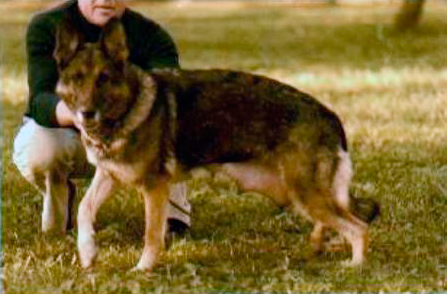
Vroni v. Busecker Schloss
“I am grateful to be able to help the young breeder who wants to reinforce her knowledge of the Working GSD and their breeding, and thus contributes to the gray dogs ….”
For the sable German Shepherd
At the time of these dogs, Working line GSDs also went to shows, and Hahn’s breeding work was well appreciated on that side as well. However, Alfred Hahn dedicated his life and kennel work to maintaining the working characteristics and healthy structure of the German Shepherd, as well as to the gray color. Due to his age and health, he was no longer able to train his own dogs for years but he had other handlers, such as Dr Helmut Raiser to train his dogs. However, Mr. Hahn closely followed dog sports and training and was e.g. well aware of Helmut Raiser’s methods. He went to see BSPs to the last and made trips with friends, e.g. to WUSV World Championships.
Afred Hahn was my first mentor
I contacted him sometime in the early ’90s, in the early days of my own breeder career, to ask for information and advice, and to share my goals in breeding sable working dogs. I didn’t guess what kind of explanation I would get from that 83-year-old breeder. Here are a few excerpts from Alfred Hahn’s letters in which he talks about his dogs and his stages as a breeder.
These letters are written in 1993
Memoirs of Alfred Hahn...
“…Before the war, many winners of the SV’s main show were sable dogs. First in 1925 Sieger Klodo v. Boxberg, and then in 1930-1931 Herold aus der Niederlausitz, whom SV’s first president, Rittmeister Stephanitz, deliberately placed to the top to add working line blood for breeding. He wanted to improve Utz v. Haus Schuttig line whose effect on character, pigment, and hardness was very negative.
1935 From Frankfurt’s first World Winner Show’s top dogs in, which also had good performance characteristics, only Bodo v.d. Brahmenau remained in breeding.
There was no Utz behind him, nor the Glockenbrinker line, which at the time were very over-used and bad for working abilities. Bodo came from Klodo Boxberg, and from the strong Samson v. Blasienberg line. Bodo had a very strong pigment and black color, and only slight brown marks on his legs. He was a good medium size male, solid structure, had a strong head, and excellent working qualities. He also left these characteristics to his son Onyx v. Forellenbach SchH3 BSP. I used Onyx for breeding – Faust v. Busecker Schloss was born from the combination Onyx – Wiborad v. Busecker Schloss SchH3 FH MH2.
Sable Siegers
… Among the siegers was also the sable Odin v. Busecker Schloss SchH3, which in 1937 came second after Volker v. Bern. Also dark sable Odin v. Stolzenfels was Sieger at that time – without Utz blood.
… On the background of many good, dark sable dogs are the Valet Busecker Schloss line, which today is often in 4-5 generations. This line is dominated by the influence of Valet’s father Arno v. Haus Gersie and dark sable grandfather Edo v. Gehrdener Berg. The mother of Valet’s – Daja v. Bernstein-Strand – was also a sable dog.
(Editors attention: At this point, the inbreeding percentage of Valet v. Busecker Schloss was 0.00% and the progenitor reduction factor 100.00%)
Dog-losses in the war
… In 1940 I was forced into the Defense Forces, and in 1943 I had to go to war in Russia. My own dog, sable male Iran v. Busecker Schloss, came with me at the time. A lot of dogs were pulled into the war, among them were several dogs from my kennels. As a result of the war, my breeding work also suffered a defeat, when American soldiers killed both Faust and Wiborad…
… In the SV’s main show in 1942, where Faust received VA, was the so-called “Fearlessness of the shot” (shot with an army rifle) for the first time, after which the dogs also had to perform a test of courage and will to fight. At the same time, the experiment was a test required by the military for working dogs to select breeding dogs for service in the military.
Inbreeding revived the Busecker Schloss lines
… In 1945, my wife had acquired Ossie v. Gambacher Tal, the daughter of Faust v. Busecker Schloss, who had left several good litters (by 1951). Only the fact that I used heavy inbreeding, quickly made it possible to create a new, good Busecker Schloss basis – like repeating Faust Busecker Schloss in my breeding work, brought dark sable Harras and Hektor v. Busecker Schloss (Faust 3-3). Valet’s mother Daja v. Bernstein-Strand had a litter with Harras, from which e.g. Urda and Uri Busecker Schloss. The combination of Hektor and Centa v. Busecker Schloss gave birth to the bitch Deija v. Distelrasen, who was the mother of the famous gray male, Bert v. Haus Knüfken. By combining Uri and Valet, I made an inbreeding of Daja (inz. 3-3) who was the mother of R-, U-, and V Busecker Schloss litters, and also a grandmother to the famous sable male Pollux v. Busecker Schloss SchH3 FH…
Greif z Lahntal
… Behind today’s dogs can be found the very representative Greif z Lahntal, who at the age of 14 is still a very vital dog. Among others, Greif leads to Bert v. Haus Knüfken, in the third generation (Jago> Tanga> Bert).
I saw Greif at the breeding inspection, where he presented clean and hard protection work. He also had a very confident and open nature. When I saw his pedigree, it was immediately clear to me that I wanted to buy that dog, because he was perfectly suitable for my breeding work.
Behind Greif comes Mike Bungalow. A male I bought also as a young dog, with SchH2 title. Mike had an excellent temperament, good nerve structure, dark pigment, and a solid male structure. Also in exhibitions, it often ranked at the top. Mike left his offspring a good working dog structure and working characteristics. Especially in my own breeding work with Seffe v. Busecker Schloss, among others, he left C, – E, and G litters, all of which had SchH3 titles, V appearance, and healthy hips.
“…I hope to hear from you again soon. Sincerely, A. Hahn”
Testimonial
… These sable dogs, mostly from the working lines, took part in the breeding after the war. Many breeders have remained loyal to the sable German Shepherd to this day. A notable male, the dark sable BSP-Sieger Racker v. Itztal, who also leads to Valet, has successfully continued his breeding career, as a result of which e.g. a lot of gray dogs are still seen in championships. All German Shepherd breeders should agree with what Dr. Rummel wrote in Körbuch in 1976. It should be absolutely required that breeding choices be made by giving priority to hardness, courage, willingness and controllability, rather than anatomy with its current colors (black / reddish brown).
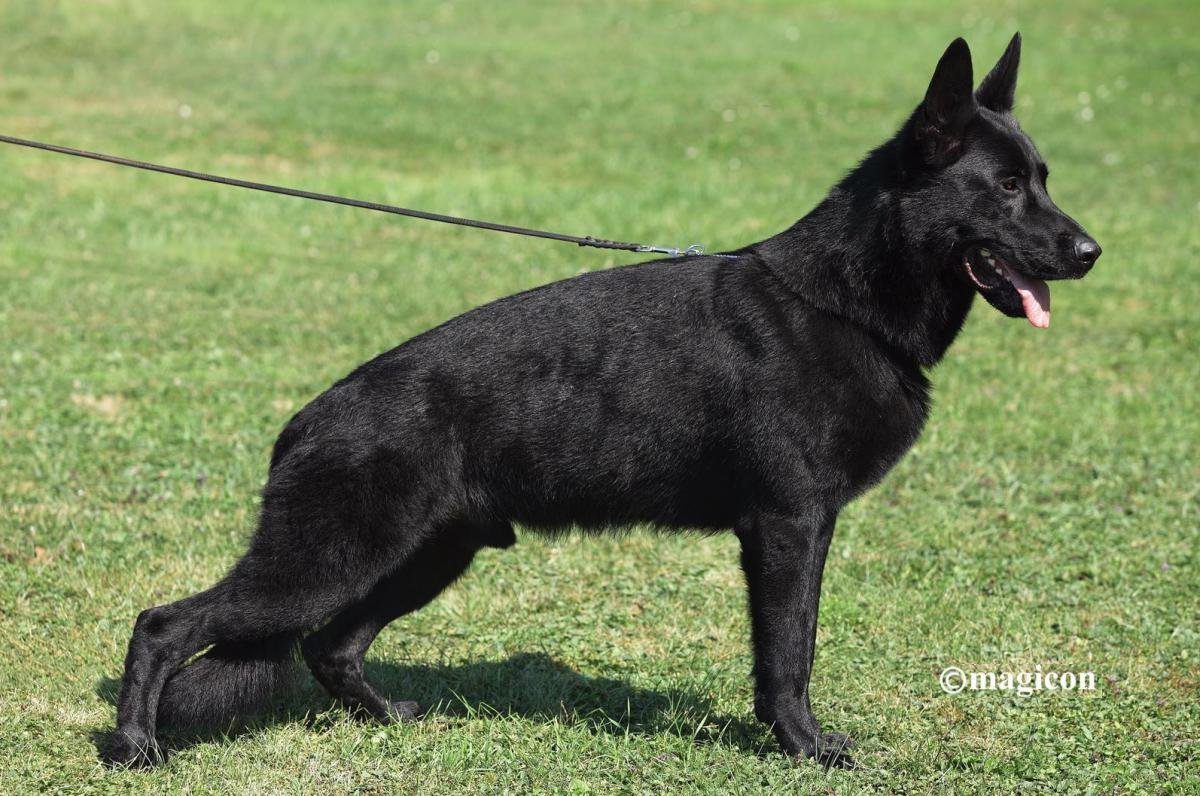
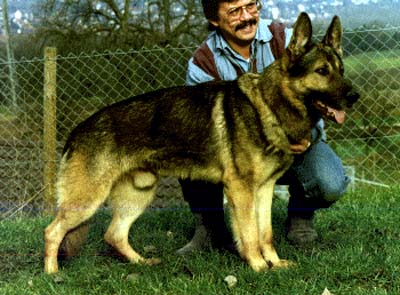

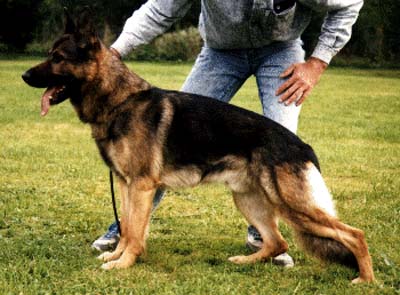
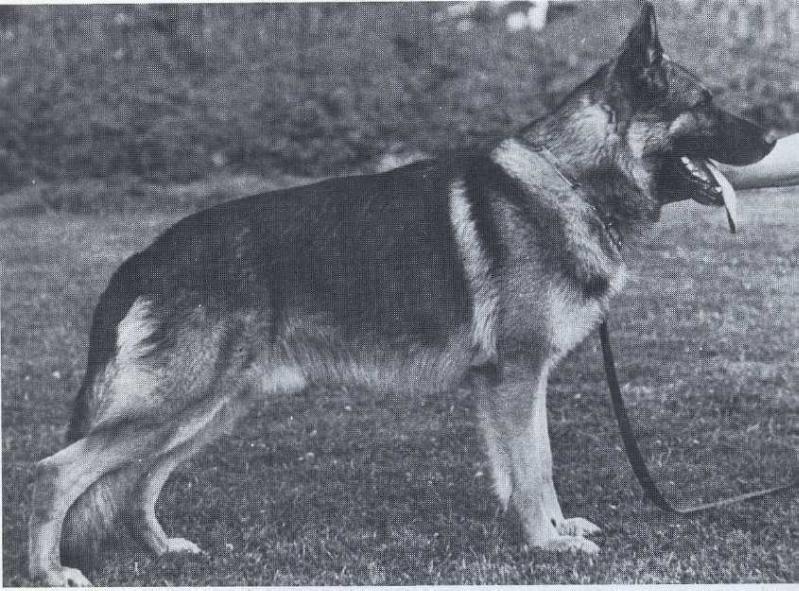
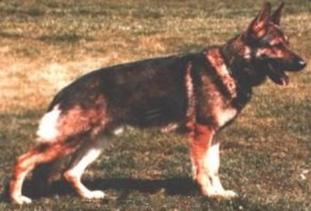
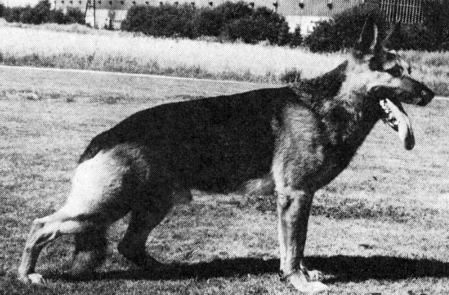
2 Responses
I’m familiar with this line. We had a dog with a strong busecker schloss line behind him. Our dog trainer died last year and with her a world of knowledge. Do you know of anyone still breeding this line?
Ty
Danielle
Hi, Danielle
I can’t say that there are any breeders who would continue Busecker Schloss -line in purpose, but there are several good dogs that carry that blood, for example, Apollo v. Schloss Solitude.
Like all lines, also Busecker Schloss dogs have given some health problems forward so maybe that is why there are not so many inbreedings to those dogs made today, despite the breeder himself at that time used his own dogs a lot in close generations.
br Heidi